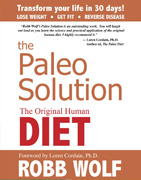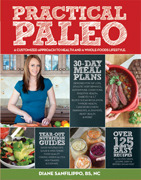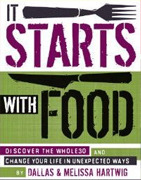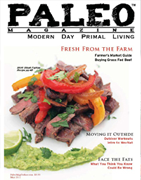Going even further, internal bacteria can impact how you feel. But it's not only bacteria, it's the altered bi-directional communication between cells and its microbiome, that leads to anxiety and depression. What in the world are MACs? MACs are complex carbohydrates, the types found in fruits, vegetables, whole grains, and legumes. When we consume MACs they release compounds into our gut that helps our body regulate its immune system, keeps pathogenic or bad bacteria at bay, and even contribute to whether we are lean or obese.
What happens if you haven't eaten any MACs? Does your good bacteria hangs around waiting, famished, hopeful that you will feed it again soon? Not exactly. When your diet doesn't contain enough MACs, our microbes are forced to rely on the only other carbohydrate source it has left, you. You become the food, by the way of the protection you have to keep from developing items like leaky gut. I don't know if you've heard about what happened when Dave Asprey went all high keto and lost the mucus in his body? Well that is because your intestine secretes a slimy coat of carbohydrates that lines your intestinal wall called mucus. This mucus lining is a rich source of carbohydrates that starving microbes can feast on when dietary pickings are slim. In this way many of our gut microbes can have a bit of a Jekyll and Hyde type of personality. Provide gut microbes with plenty of sustenance in the form of MACs and they will happily convert them into molecules our body needs to be healthy. Starve your gut goodies of dietary MACs and they will munch on your mucus lining inching ever closer to your intestinal wall. This is what can cause that leaky gut as well as other long-term this situations like an immune system that's on a hair trigger, impacting not only the health of your gut but your entire body. A professor of genetic epidemiology at King’s College London, Tim Spector, wanted to find out what happens to your gut if you eat only fast food, specifically McDonald’s, for 10 solid days.

His son, Tom, became the willing guinea pig and reported his symptoms, as well as sent stool samples to different labs, throughout the 10-day trial. If you watched Morgan Spurlock's documentary “Super-Size Me,” you probably have an idea of how the experiment panned out…
“Tom said that for three days he felt ok, but then started to become more lethargic and turned a slight gray color according to his friends. He reported feeling bad the last few days and says he also experienced some withdrawal symptoms,” TIME reported.1
The most revealing results came from the stool samples, however, which revealed what the fast food had done to Tom’s gut. It has to do with the benefits we get from whole foods. More and more we are seeing this in research.
Recent the research has focused on a few specific phytochemicals. Phytochemcials are the biologically active compounds found in plants. The one's they've been focusing in on are glucosinolates in cruciferous vegetables, soy isoflavones from whole nongmo soy, and plant lignins. Cruciferous vegetables—that is, broccoli and its vegetable relatives—are the poster children of cancer-preventing vegetables. From a human dietary perspective, one of the challenges to deriving chemopreventive benefit from cruciferous vegetables is that the active component that actually imparts the protective benefit, is difficult to access. It exists in the plant as an enzyme which is active only in raw vegetables. Cooking inactivates it. Too much of this enzyme tends to cause gastritis in some individuals and can compete with iodine for uptake by the thyroid in others. Given that very few human populations regularly consume raw cruciferous vegetables, how are humans deriving the chemopreventive benefit of broccoli and other cruciferous vegetables? The answer is in our gut microbiome.
They also did a meat vs soy study. In this they saw that there was an increase in the inflammatory molecules for the meat eaters, not similar with the soy protein. Other studies also show that soy protein is a good source of nutrient but also a biological polymer to influence physiological change and microbiome changes when it’s a good non-gmo soy product rather than a subpar genetically modified or highly processed soy. Well that makes sense, right? Most soy used in food is genetically modified and as well is extracted by an industrial process from the waste product of soy oil manufacturing. It is the industry’s way of making a profit on a waste product. Like our food we are seeing that limited processing is where we get the most benefit from whole foods.
In the fat study when they gave the mice soluble plant fibers the whole cascade averted. No endotoxins, no inflammation, no insulin resistance and no weight gain. Apricots, grapefruit, mangoes and oranges. Brussels sprouts have one of the highest amounts of soluble fiber. A 1/2-cup serving contains 2 grams. Turnips, sweet potatoes and asparagus all have 1.7 grams or more. Brussels sprouts and turnips contain those glucosinolates. Consider a raw turnip salad. A single tablespoon of ground flaxseed contains 1.1 grams of soluble fiber. Ground flaxseeds also contain healthy omega-3 fatty acids, which, along with soluble fiber, help reduce heart disease risk. And of course properly prepared legumes are especially high in soluble fiber. These are included in the Whole30 Vegan diet plan, and in the new FFF Vegan Reset. Your soluble fiber is a prebiotic which nourishes the healthy microbiome and are essential for real microbiome health. I get some of those glorious prebiotics in my vegan smoothie every day, because I know how essential it is. For some people prebiotics can increase SIBO symptoms by feeding the small intestinal growth when they first get started. So they may need to start slowly, less probiotics, but for sure do not give up. Adding in digestive enzymes throughout the day will help to improve break-down and absorption of protein and nutrients which will help those gut microbes do what they do best.
You may want to follow the HLR Live broadcasts to keep learning more or reach out to make some nutritional simple changes to your lifestyle.









































0 comments:
Post a Comment